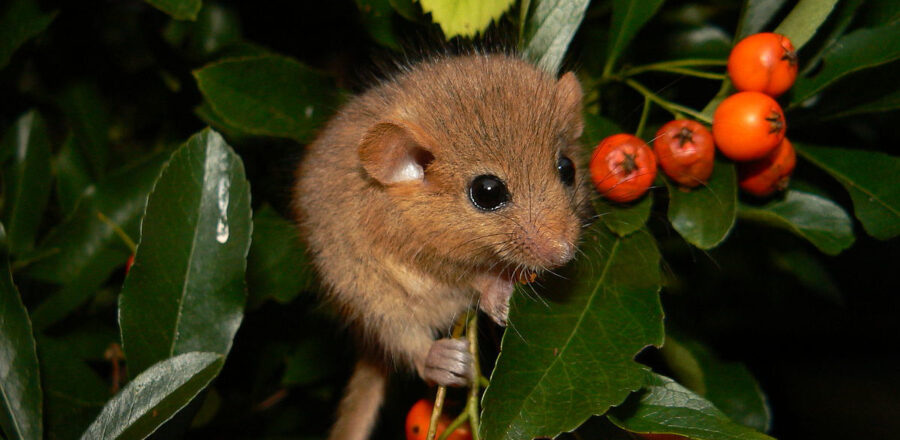- Zoology
- Daily Critter Facts
- For Teachers
- Study Guides
- Diseases & Parasites
- Contact

Nestled within the intricate tapestry of woodland habitats in Europe and parts of Asia, a charming creature roams the leafy canopies with an air of mystery and grace — the hazel dormouse (Muscardinus avellanarius). Despite its diminutive size, this enigmatic rodent captivates the hearts of naturalists and conservationists alike. In this article, we embark on a journey to unravel the fascinating world of the hazel dormouse, discovering its habits, habitat, and the conservation efforts crucial for its survival.
The Tiny Titan: Understanding the hazel dormouse
Physical Characteristics
With its large, glossy eyes, soft fur, and long tail, the hazel dormouse exudes an irresistible charm, resembling a miniature teddy bear.
Behavior and Habits
Primarily nocturnal (active at night), these agile climbers spend their nights foraging for food among the tree branches, feasting on a diet consisting of fruits, nuts, seeds, and insects. Come winter, they retreat into hibernation, relying on their plump reserves of body fat to survive the cold months.
The Secretive Sanctuary: Habitat of the hazel dormouse
Woodland Wonderland
Hazel dormice find sanctuary in diverse woodland environments, including deciduous forests, hedgerows, and scrublands. Their preferred habitat boasts an abundance of hazel trees, providing both sustenance and shelter.
Arboreal Abodes
Equipped with remarkable climbing skills and a penchant for constructing intricate nests woven from leaves, grass, and moss, these arboreal creatures thrive amidst the leafy canopy, seeking refuge in the dense tangles of vegetation.
Conservation Challenges and Efforts
Threats to Survival
Despite their endearing nature, hazel dormice face a myriad of threats, including habitat loss, fragmentation, and climate change. Additionally, modern agricultural practices and urbanization pose significant challenges to their survival.
Conservation Initiatives
Recognizing the importance of preserving this charismatic species, dedicated conservationists and organizations have implemented various initiatives aimed at safeguarding the habitats vital to the hazel dormouse. These efforts include habitat restoration, the creation of wildlife corridors, and public awareness campaigns to promote responsible land management practices.
Citizen Science and Community Engagement
Harnessing the Power of the People
Citizen science projects play a pivotal role in monitoring Hazel Dormouse populations, allowing enthusiasts and volunteers to contribute valuable data on their distribution and abundance.
Educating and Inspiring
Engaging local communities and fostering a sense of stewardship for the natural world are integral to ensuring the long-term survival of the hazel dormouse. Through outreach programs, educational workshops, and wildlife-friendly gardening initiatives, individuals can become ambassadors for conservation in their own neighborhoods.
Conclusion
In the intricate web of woodland ecosystems, the hazel dormouse emerges as a symbol of resilience and enchantment, weaving its way into the hearts of all who encounter it. As we continue to navigate the ever-changing landscape of conservation, let us remain steadfast in our commitment to preserving the delicate balance of nature, ensuring that future generations may also delight in the sight of this tiny yet mighty creature amidst the leafy boughs of its woodland home.
Guest author/writer: Joshua
Photo credit: Danielle Schwarz
